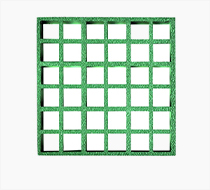loading...
- No. 9, Xingyuan South Street, Dongwaihuan Road, Zaoqiang County, Hengshui, Hebei, China
- admin@zjcomposites.com
- +86 15097380338
- Welcome to visit our website!
Understanding the Components and Functionality of Reverse Osmosis Membrane Housing in Water Purification Systems
The Importance of Reverse Osmosis Membrane Housing in Water Purification
Reverse osmosis (RO) technology has gained significant attention in recent years due to its effectiveness in purifying water. At the core of this innovative technology lies the RO membrane, which plays a crucial role in removing contaminants from water. However, to ensure the membrane operates efficiently and maintains longevity, proper membrane housing is essential. In this article, we will explore the importance of reverse osmosis membrane housing, its design considerations, and its impact on water purification processes.
First and foremost, reverse osmosis is a filtration process that uses a semi-permeable membrane to separate impurities from water. The membrane allows water molecules to pass through while blocking larger contaminants such as salts, heavy metals, and other dissolved solids. This process is widely used in residential, commercial, and industrial applications to produce clean drinking water. However, the performance of the RO membrane is heavily influenced by its housing.
Membrane housing serves as a protective shell that encases the RO membrane and ensures its stability during operation. The design and construction of the housing are critical for several reasons. First, it must withstand the high pressures that are typical in RO systems. Water pressure can significantly affect the performance of the RO process, and the housing must be rigid enough to prevent deformation under such conditions.
Moreover, the housing must be made from materials that are resistant to corrosion and degradation. Common materials used in membrane housing include fiberglass, ABS plastic, and stainless steel. Each material has its advantages and disadvantages, but the primary goal is to ensure durability and resistance to the harsh conditions often found in water treatment processes, including exposure to chemicals and varying temperatures.
reverse osmosis membrane housing

Another essential aspect of membrane housing design is the ease of maintenance and replacement. Over time, RO membranes may require replacement due to fouling, scaling, or general wear and tear. A well-designed housing should facilitate easy access to the membrane, allowing for quick changes with minimal downtime. This accessibility is crucial in both residential systems, where users may handle their maintenance, and industrial setups, where efficiency is paramount.
The configuration of the membrane housing also impacts the overall efficiency of the RO system. There are typically two types of configurations single-element and multi-element. Single-element housings are suitable for smaller systems, while multi-element housings can accommodate several membranes in parallel, increasing the system’s output capacity. Choosing the right configuration based on the application's specific water demand is critical for optimizing performance.
Furthermore, the design of membrane housing also affects hydraulic flow and distribution. An effective housing design ensures that water is evenly distributed across the membrane surface, maximizing contact time and enhancing the filtration efficiency. Uneven flow can lead to channeling, where water travels through the path of least resistance, resulting in inadequate filtration and potential membrane damage.
In conclusion, reverse osmosis membrane housing plays a vital role in the overall performance and efficiency of water purification systems. Its design must prioritize durability, accessibility for maintenance, and optimal hydraulic flow to ensure effective contaminant removal. As water scarcity and quality issues continue to rise worldwide, investing in robust reverse osmosis systems with well-designed membrane housing becomes imperative to safeguard this precious resource. Understanding these components can lead manufacturers and users alike to make informed decisions that enhance the longevity and efficiency of water treatment systems.
-
Revolutionizing Industrial Safety with ZJ Composites' Mini Mesh GratingNewsNov.14,2025
-
Premium FRP Profiles and FRP Grating Revolution for Global WholesalersNewsNov.14,2025
-
Ultimate Strength with ZJ Composites FRP Profiles for Wholesale SuccessNewsNov.14,2025
-
ZJ Composites Covered Grating – The Durable Flooring Solution for Smarter Industrial SpacesNewsNov.14,2025
-
Mini Mesh Grating Enhancing Strength and Style in Every ProjectNewsNov.14,2025
-
FRP Pressure Vessels by ZJ CompositesNewsNov.14,2025
-
Transforming Industrial Spaces with Advanced Frp GratingNewsNov.11,2025
